Peristoli: varieties with a description, selection, care
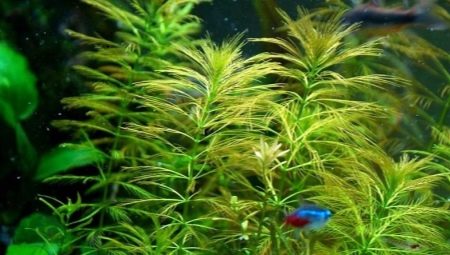
A large number of people are trying to start aquarium fish. However, just an aquarium with fish looks unnecessarily empty and uncomfortable. The way out is the use of special plants, among which the pinnacles deserve attention.
Peculiarities
This species is well known to many aquarists. If you correctly embody the idea, you can achieve excellent juiciness and freshness, which designers appreciate. There are several varieties of the plant, many of which are used on their own. The pinnate looks like a delicate herringbone with a soft texture. Consumers appreciate the unpretentiousness and original look of the plants.
They help to change the chemical composition of the aquarium water in the desired direction. The vast majority of subspecies are colored green. The leaves become covered with air droplets, indicating an exceptionally high rate of oxygen production.
The aquarium plant myriophyllum is popular. It is capricious and grows no more than 0.4 m, which allows you to form a voluminous bush.
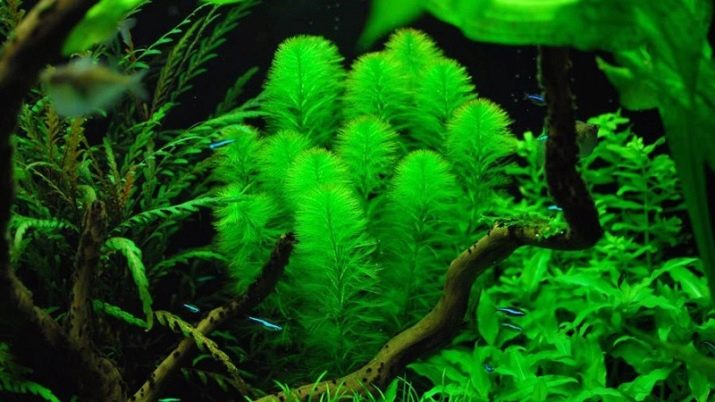
Views
Brazilian
Noteworthy is the Brazilian pinnate, which belongs to the schist family. This plant is actively used by aquarists around the world. It is appreciated for its suitability for placement in aquariums of all sizes and for its minimal fancy. The Brazilian subspecies can grow normally at air temperatures from +20 to +26 degrees. For a short time, it can go down to +14 and even up to +12 degrees without any consequences.
Since the plant comes from hot countries, the lack of light is critical for it. In this situation, the stem can be pulled out, and the leaves lose their color juiciness. The Brazilian pinworm is susceptible to algae growth. Due to the poor development of the root complex, it will be advisable to use sand with a total thickness of 0.02–0.03 m as soil.
It is very easy to propagate the Brazilian pinnate by grafting the stems.
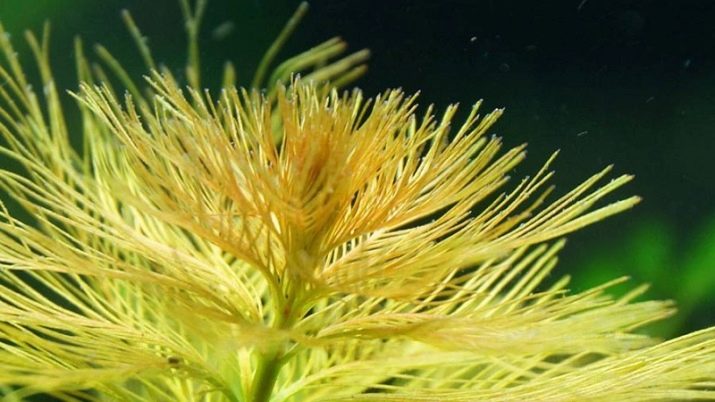
Ponytail
The tail-shaped type of plant deserves no less attention. It comes from the waters of North America. In nature, this species reaches Mexico in the south. Important: he is able to develop normally only in clean water. Due to its minimal requirements, the culture is excellent for inexperienced aquarists.
The caudate pinnate is completely formed by whorls with leaves. They are placed at a short distance from each other. There are 4 or 5 leaves per whorl. The leaf plate is colored dark green. Its size is approximately 0.03 m. The stem of a dark cherry tone is covered with a light downy. Poor branching helps to distinguish this species from other members of the same genus. The caudate plant has very fragile, easily breaking branches. In an aquarium, it forms long stems that quickly interweave into dense thickets. The shoot can reach 2 m or more in length.
The caudate plant will be able to develop both when planted in the soil and in free swimming mode. However, in the second case, development is much slower. Usually this culture is planted with 10-12 bushes in the background or at the sides of the aquarium. If conditions permit, weekly growth can reach 0.08 m.
The advantage of such a pinnate is the combination of excellent appearance with another function: it can serve as a refuge for small fish.

Spicate
In the reservoirs of most of the planet, you can find a spiky type of plant. It cannot be found only in the following parts of the world:
- Australia;
- South America;
- Central America;
- central part of Africa.
In nature, such a pinnate inhabits both fresh and slightly salty water. The spikelet uruti (alternative name) develops an elongated stem. It is covered with heavily dissected leaves. They are grouped into whorls of 4, 5 or 6 pieces. Under normal conditions of development, flowering necessarily occurs, then medium-sized pinkish flowers are released, creating something like an ear.
Inflorescences grow above the water, rising above its layer by 2 m or more. The not too flashy appearance of the spiky plant does not prevent it from giving refuge to small species of fish and fry. Urut is eagerly eaten by individual fish. Usually it is planted in small groups. For the formation of dense thickets, systematic pruning is imperative.
In addition, if the shoots are not pruned, the emergent leaves will ache and wither. Underwater cultivation of pinworm is allowed, but it is accompanied by slow growth. Turbid water is not suitable for this species, because of it the leaves become clogged and lose their attractive appearance. We'll have to equip the aquarium with powerful water filters. Spiked urut does not tolerate sudden jerks of temperature very well. Reproduction of this species is done by cuttings.
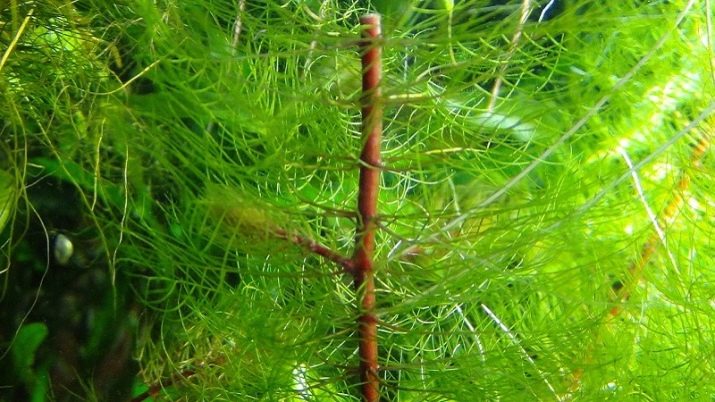
Christmas tree
The fir-tree pinnate is considered less whimsical. It inhabits both American continents. Sometimes this species is also called the povoinichkovy pinworm. Light green bushes in the water column look very attractive. The roots of povoinichkovy pinnate are rather underdeveloped. For reliable rooting, sand 0.04–0.05 m thick should be used. The sand should be moderately saturated with silt. Make-ups with mineral mixtures are not required. For reproduction, stems are cut.
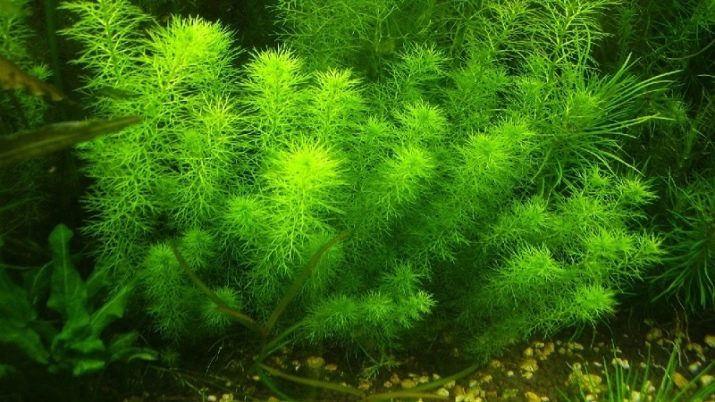
Roraima Peristula
Many people use Roraima's cirrus in their aquariums. It got its name from the Brazilian state where this plant grows.It is great for both experienced and novice fish farmers. A characteristic feature of the culture is its atypical appearance. Brown-orange foliage is perfectly combined visually with a red-brown stem. The height of the Roraima urut can be about 0.5 m with a maximum diameter of 0.06 m.
It is recommended to plant this species in groups, at the back or side of the aquarium. There are no special complaints about the water temperature. But this will require careful aeration and reliable filtration. The appearance of particles of suspension on the leaves, along with the loss of appearance, will gradually destroy the plant. The rooting sand layer should be 0.02–0.03 m.
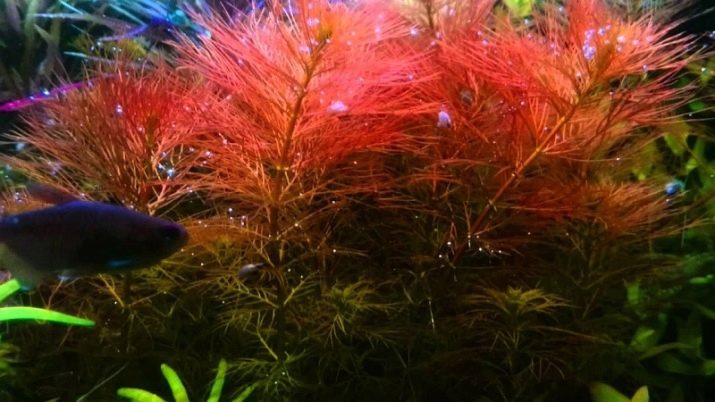
Chipped
It is also useful to pay attention to the chipped pinnate. In nature, it is found in Cuba, Mexico, less often in other regions of North America. In whorls, 3, 4 or 5 light green leaves are formed.
It is advised to plant such a culture in the middle of the aquarium. Blooming (with the formation of small flowers) is rare.
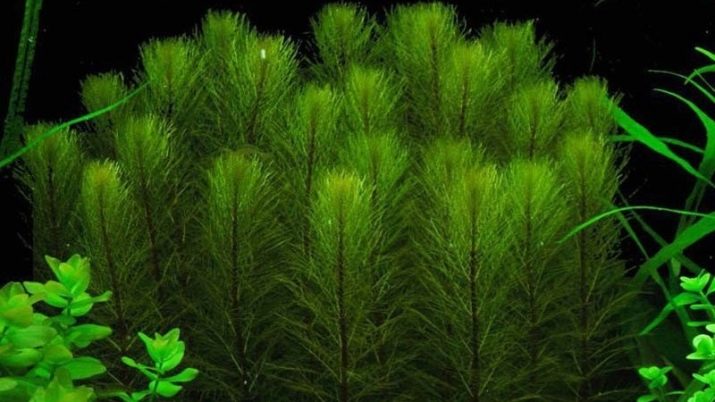
Red
It is worth taking a closer look at the red (aka Matogross or red-stemmed) pinnate. This is a very beautiful plant. However, the very strict requirements make it not very suitable for beginner hobbyists. Mostly this culture is used in Dutch aquariums. In nature, red urut is found in the countries of Southeast Asia, as well as in Indian and Pakistani water bodies.

Green
The green type comes from central America. It forms long, light green stems. Sometimes the plant forms emergent leaves. The length of the leaf plate reaches 0.04 m. The underwater foliage of the green pinnate is sensitive to light.
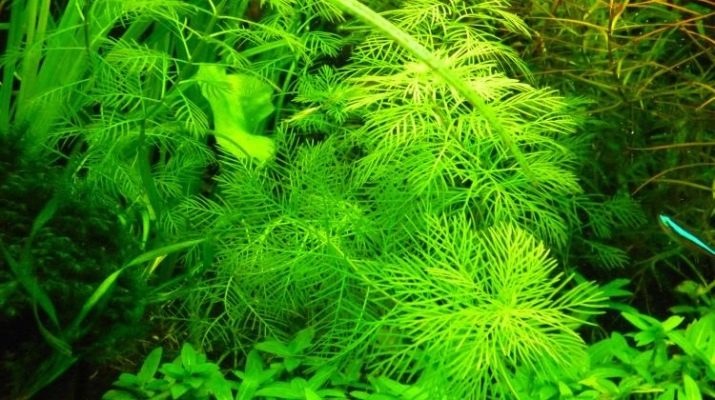
How to choose?
Already a general description of the various types of pinnate shows that some types are demanding on the conditions of keeping, while others can be grown in any aquarium. For experienced breeders, this does not really matter, but in the absence of the proper qualifications, you need to choose a simpler culture. And also you should pay attention to the following points:
- the required size of the aquarium;
- the composition of the fish that inhabit it;
- provided temperature and acidity of water;
- lighting characteristics;
- the financial well-being of the breeder.
It is also necessary to take into account the following nuance: some plants should grow in the middle of the container, others along its walls, and still others in both places. The size of the plants must also be taken into account. Attempts to plant them without regard to this requirement will lead to filling the entire volume of the aquarium. There will be no room for fish and even other crops.
Many of the examples sold in the markets initially grow in the air. Despite the graceful appearance, these plants in the aquarium will hurt. Even if they adapt, there is no need to wait for external attraction. You should also take into account such nuances as:
- the difficulty of leaving;
- coloring of a specific option;
- fauna safety for certain fish.
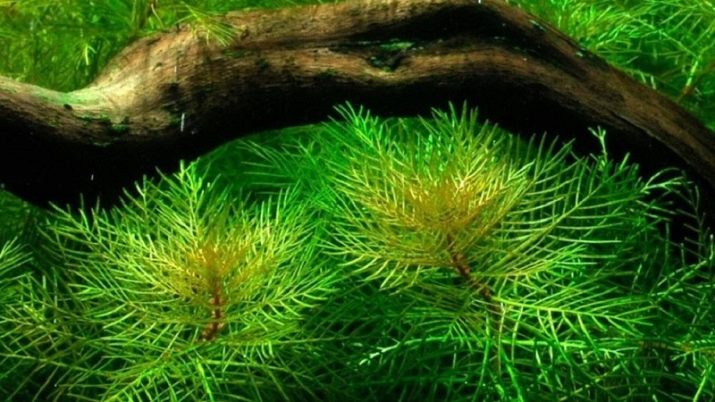
Reproduction
Predominantly pinnatiles are propagated by segments of stems. It is necessary to use cuttings no shorter than 0.05 m. They are planted either in pots or directly in the ground. New buds will form fairly quickly. But you can also take ready-made buds that are laid on the tips of the branches; they are kept in a vessel of water in the light.
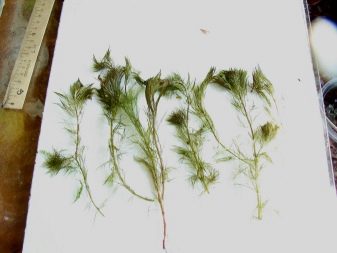
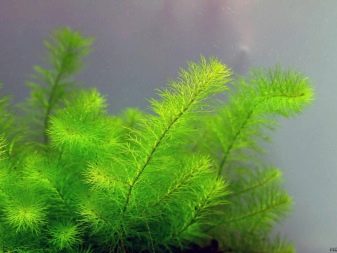
Content rules
Caring for the cirrus in the aquarium is quite simple. They are not even quarantined. Before disembarking, they are washed of road dust - and then they calm down. The water should be warm (from +20 to +28 degrees). More precise recommendations depend on the specific type of uruchi. If the water is too cold, the plant will live less than it should be.
Insolation is quite important. If the daylight hours are less than 12 hours per day, you will have to artificially compensate for the light deficit. But the rays should fall on the plant absent-mindedly. Water is used only soft, with a neutral chemical composition. Once every 7 days, 1/3 of the water is replaced.Formally, you can do without it, but it's better not to risk it. There is no need for special feeding if there are also fish in the aquarium. A purely botanical composition is fertilized with liquid complex mixtures. This is completely sufficient if the plant is doing well. It is recommended to plant this plant in coarse sand. It should be moderately saturated with silt. In a gravel aquarium, the culture is planted in pots. They can be buried in gravel or placed along the walls. Illumination is provided by fluorescent lamps with a flux intensity of 0.4 W / l.
The addition of carbon dioxide dramatically accelerates the growth of bushes. They become prettier. The whorls cut off during the shearing are either thrown away, or buried for rooting, or left to float freely in the water. After cutting, the urut will grow faster and form side shoots more actively.
It is unacceptable to combine the plant only with those species that will not shade it.

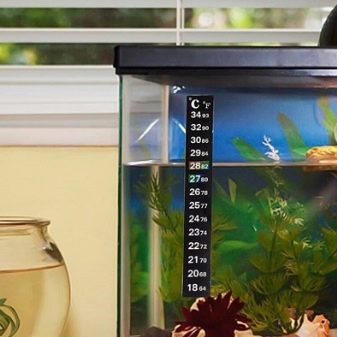
Possible diseases and their treatment
Sometimes in the uruti, the stem begins to stretch, and the foliage falls off at the same time. To cope with this problem, you need to improve the lighting. But when too much algae appears, then the ornamental shrub is suffering from direct sunlight. Loss of decorative properties is usually associated with water pollution. The fragile succulent foliage of the pinnate attracts many herbivorous fish.
If the plant is not grown to feed them, you need to abandon the cultivation of such species. When the lighting is in order, and the urut is still withering, you need to check other versions - first of all, the lack of carbon dioxide. It is worth noting that it will not be possible to compensate for the lack of light by supplying more carbon dioxide (and vice versa). It is also necessary to very carefully control the proportions of macro- and micronutrients.
There are also the following nuances that help to deal with problems:
- ventilation should be intense, but not create a violent current;
- it is required to constantly monitor the proportion of fish and plants;
- there should be algae eaters in the aquarium;
- in case of failure of the simplest measures, you need to contact the professionals.
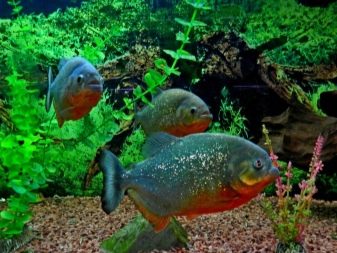

For more information on the cirrus, see below.








